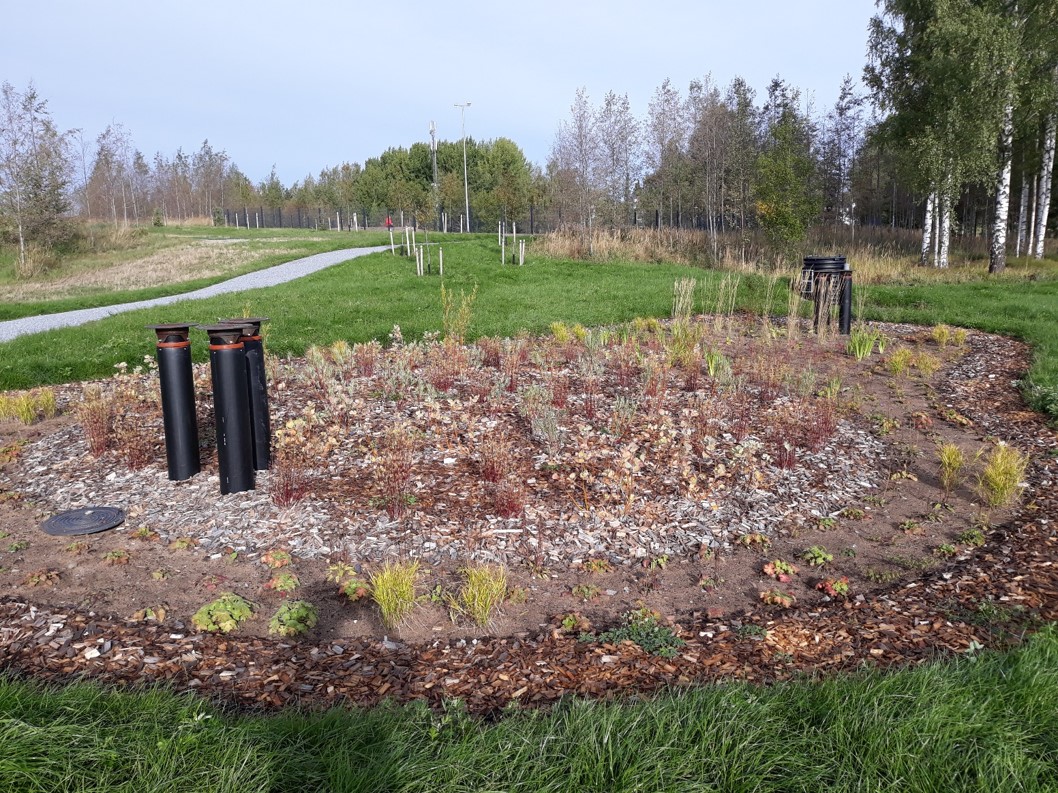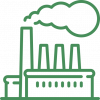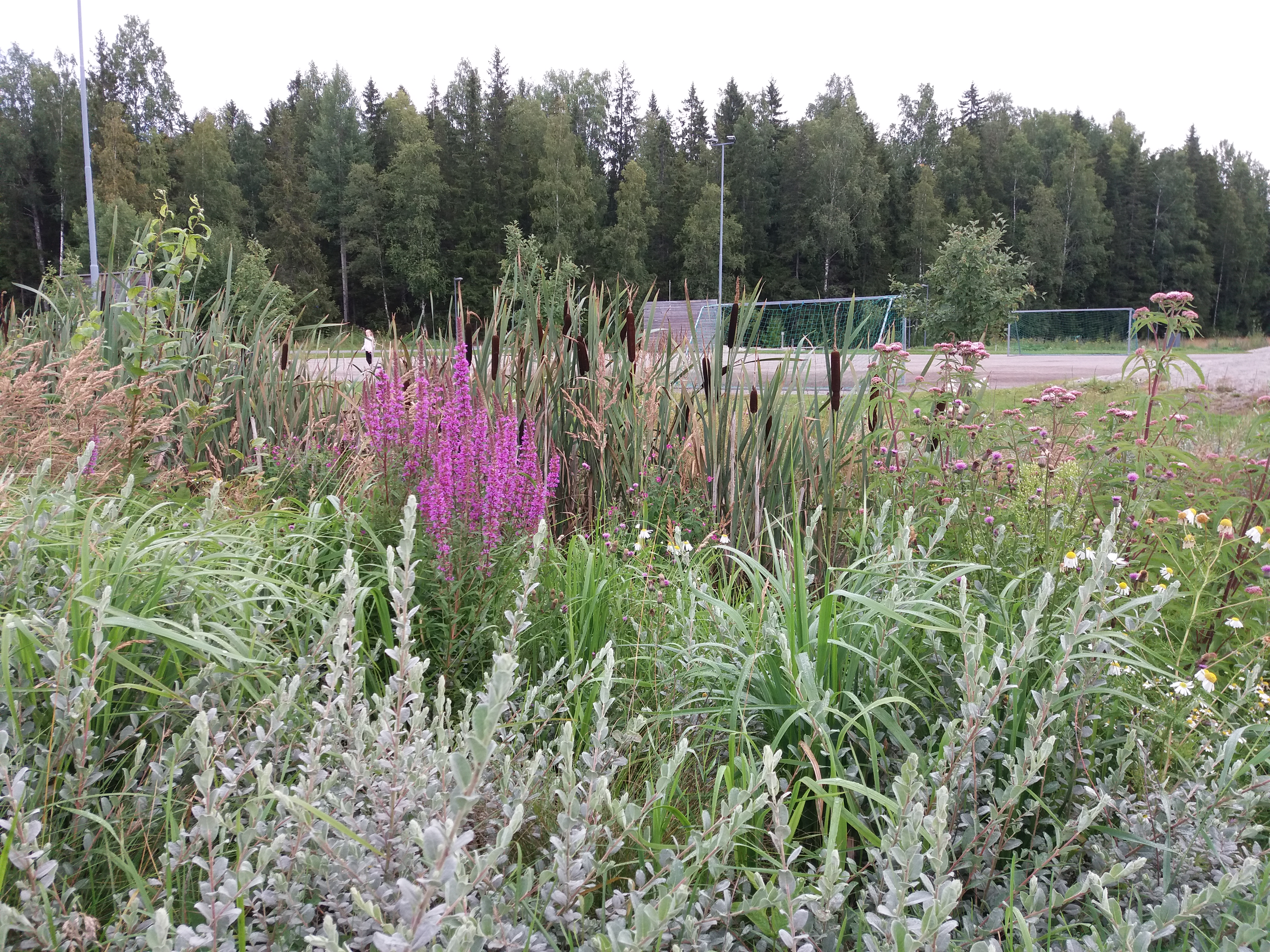Biofilter in Hiedanranta
The biofilter in Hiedanranta was constructed to clean leachate from an old pulp mill landfill. Previously, the city has used sand filters to purify urban run-off in specific sites such as snow collection areas. The Hiedanranta NBS demonstration is a first attempt to purify leachate from a contaminated site in situ with more advanced filtering materials. This demonstration has advantageous upscaling possibilities to many sites with water pollution issues in Europe and beyond.
TECHNICAL SPECIFICATIONS
The biofilter's catchment area is approximately 2 hectares. Polluted seepage water, with particularly high concentrations of nitrogen and phosphorus compounds, is collected from the catchment area and is conveyed into the biofilter through an underdrain at 1m depth.
The biofilter consists of different filtering layers. The soil layer below the underdrain is a peat-based growth medium that contains spruce biochar which is produced in Hiedanranta. Biochar accelerates the retention of pollutants and water, and the deep-rooted bushes and perennials that have been planted on the top of the filter also retain water and nutrients. In the bottom drainage layer of the system, light gravel aggregates are used to improve the removal of pollutants and to neutralise odours. The drainage layer includes an underdrain pipeline that finally conveys the treated water to a nearby lake. The purification ability of the biofilter is monitored through automatic water quality measurements for inflow and outflow. Conductivity, turbidity, pH, temperature and flow are monitored online, whereas nutrients and pollutants are measured manually.

Potential for replication and upscaling
Biofilters with special filtering materials (biochar, peat and light gravel aggregate Leca) is a potential solution for treating nutrient rich leachate from sites such as old landfills as they can remove nutrients, including nitrogen. However, biochar used for water treatment should not include fine particles as it can cause blocking or the particles can be leached into the receiving waterbody. Biofilters can only handle relatively small amounts of water and, in the case of overflow, nutrients and other contaminants may be leached out of the structure. If the catchment area is large and the flow rate is high, plenty of space will be needed or/and a solution for overflow situations should be in place.
There is an uncertainty related to biofilters' life cycle. This is dependent on, at least, the quality and quantity of the water channelled into the filtration area and the filtering materials used. Hence, more studies are needed on the long-term performance of biofilters. In Tampere, biofiltration solutions are replicated in areas where problems with the quality of storm water runoff have been identified. A leca-based biofilter has been built in the Rusko industrial area where poor quality of urban runoff is causing problems. The bad quality of the runoff from Hervanta is problematic as the water from the Houkanoja stream is used for irrigation. The filter seems to function well in the summertime, but during cold winters it can freeze.








